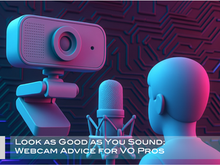Should You Update to macOS 26 “Tahoe”? Why Waiting Might Save Your Studio
- Frank Verderosa
- Oct 5
- 3 min read
Updated: Nov 14

People have been reaching out about whether or not to update their Mac OS to os26 (Tahoe). So I decided it was time to refresh this old blog post as a reminder! Every time Apple unveils a shiny new macOS, the hype machine kicks into overdrive. The demos are slick, the features sound life-changing, and you start to feel that familiar itch to click “Update Now.”
But hold up. Before you take that leap, let’s have a quick heart-to-heart: updates aren’t always upgrades. It’s dangerously easy to jump from the leading edge to the bleeding edge of technology.
In the audio world—especially if your Mac is your money-maker—an early OS update can do more harm than good. You could find yourself with a studio full of silent gear, missing plug-ins, or a DAW that refuses to launch. Not exactly what you want the morning of a live session.
Why Updating Too Soon Can Hurt
Digital studios have always had to balance the lure of new features with the risk of lost time. When you’re managing multiple systems or clients, one “innocent” OS update can snowball into serious downtime.
The reason? Not every developer is ready when Apple hits “launch.” Avid, for instance, maintains a Pro Tools compatibility chart—and macOS 26 “Tahoe” is still marked as not yet qualified for several major DAWs, audio interfaces, and plug-ins.
Until your essential software officially supports the new OS, you’re playing tech roulette.
“Slow your roll! Updates aren’t always upgrades, and you can quickly jump from the leading edge to the bleeding edge of technology.”
A Real-World Example
An actor once reached out in a panic—his recording setup had suddenly gone haywire. We spent hours troubleshooting over text and calls, tweaking settings, reinstalling drivers, testing everything. Finally, we got it working again.
Victory!
Then… the next morning, he messaged me. Same issue, all over again. The culprit? His operating system updated automatically overnight and undid everything we fixed.
That’s when I reminded him (and I’ll remind you): turn. off. automatic. updates.
What You Can Do
Turn Off Automatic Updates
Apple loves to keep you “up to date.” But if your system is rock-solid and working perfectly, there’s no reason to change it. For example, the DAW you’re using and third party plugins might need costly updates that you aren’t ready for.
If it’s not broken, don’t let Apple fix it.
Check Compatibility First
Before you update, visit the websites for your critical software: Pro Tools, Logic Pro, Reaper, Adobe Audition, Source-Connect, and your audio interface manufacturer. Most post OS compatibility notices within days or weeks of release.
Apple’s own tools—like Logic Pro or GarageBand—are usually quick to adapt. But your third-party plug-ins and hardware might not be. Always check before you click.
Remember: You’re the Beta Tester Now
Ever notice how new OS versions come with a steady stream of “bug fix” updates afterward? That’s because early adopters are basically beta testers.
Apple gets real-world feedback from people like you—and you get crashes, driver issues, and unexpected downtime. Let the first wave of users test the waters before you dive in.
Have a Backup Plan (Always)
If you’re not already running Time Machine, now’s the time. It’s the easiest way to roll back if a new update breaks your setup.
Or take it a step further and create a bootable clone using tools like Carbon Copy Cloner or SuperDuper!. If the update goes sideways, you can literally boot from your clone and get back to work.
And of course, keep your projects on an external drive. If your internal system crashes, your work—and your sanity—stay intact.
The Bottom Line
macOS 26 “Tahoe” looks sleek, sounds exciting, and promises big things—but if your Mac is the centerpiece of your studio, patience is your best friend.
Before updating, make sure your DAW, plug-ins, audio interface, and Source-Connect are all green-lit for Tahoe. Don’t let a surprise update knock you offline right before a session or casting.
Stay informed, stay backed up, and keep your rig stable. The new OS will still be there next month—after the bugs and broken drivers aren’t.
As always, if you’ve got questions or hit a snag, head over to the VO Help tab!
Frank Verderosa is an award-winning audio engineer and voiceover casting director with decades of industry experience. As the owner of POV Audio, he casts, sound-designs, and mixes television, radio, and promo campaigns for leading ad agencies and networks. Outside the studio, Frank supports the voice actor community through coaching, consulting, and demo production for talent at every level. To connect or learn more, visit www.frankverderosa.com and use the chat tab or explore the Voice Actor Services section.































Thank you for this!!!!